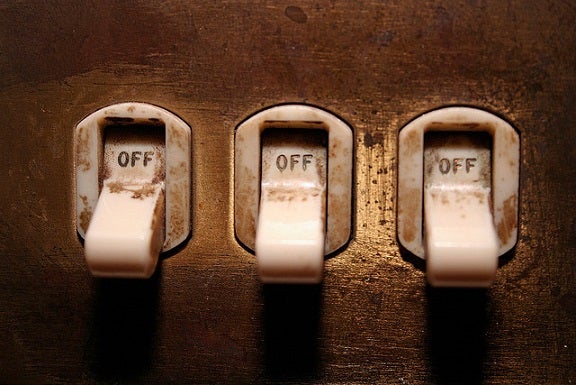Dear Utilities, Change or Get Dumped

Like many relationships, the one between utilities and their customers can be complicated. Sure, they’ve been together for decades, but no longer are customers satisfied with a distant, disengaged power company selling them more and more megawatts.
As the utility business model evolves into one based on diverse energy services, utilities must find ways to prioritize and improve their customer relationships if they hope to thrive in the new energy economy.
What do customers really want?
It doesn’t take years of market research to discover that utility customers enjoy saving money. But just as important as a low price for power – if not more so – is a genuine feeling of power. Just ask Dr. Philip Lewis of global energy think-tank VassaETT, who has researched the subject for years. His findings show that customers want to be in control of their energy behavior. They want market transparency and predictable rewards for their choices. The bottom line, says Lewis, is that customers want to feel like equals with their electricity suppliers, not captives.
A recent Accenture study maintains that the issue of customer choice is at the heart of the changing utility landscape. In an ever-evolving energy marketplace, consumers value personal connections and are interested in buying products and services that align with their lifestyles. Utilities, for their part, have long been able to ignore these qualitative concerns, but it’s increasingly clear that they must refocus their attention on serving this new breed of customer if they want to remain in the picture.
How can utilities deliver?
Open communication is the basis of any healthy relationship, and perhaps the easiest and best way for utilities to improve their connection with customers is to expand their use of social media. These days most utilities have Twitter and Facebook accounts, but few appear to be maximizing the potential of these and similar channels for customer interaction.
For example, utilities can use social media for sharing information on storms and power outages. ComEd and Duke Energy are but two companies that turned to social media in the wake of severe storms in recent years, posting real-time updates on repair and recovery efforts and earning widespread customer participation and media coverage in the process. Social media can also help utilities segment their markets and target specific groups of customers for energy efficiency or demand response products and promotions.
Additionally, social media enables dynamic customer-to-utility communication, an invaluable avenue for discovering and discussing customer needs. Though it’s clear that customers generally want more control of their energy behavior, utilities cannot simply employ a one-size-fits-all solution. The amount of customer control and the corresponding offerings of products and services will vary based on a myriad of geographic, cultural, and socio-economic factors. As they navigate these market uncertainties, utilities can use social media to gather information about customer trends – such as which neighborhoods are going solar fastest – gauge interest in new products and services, and create personalized marketing channels.
Hope on the Horizon
One hopeful development in the area of customer engagement is We Stand For Energy, a new national campaign sponsored by the Edison Electric Institute (an association of investor-owned utilities, or about 70 percent of all US power companies) that seeks to educate people about the value of a reliable, affordable, clean energy future. The interactive website, which formally launched in late May but is still being rolled-out to independent utilities across the US, invites visitors to register using their name, email, and zip code. In exchange, they’re offered “regular updates” and a chance to “participate in the conversation with our community.” The website also features a blog and an interactive map of the United States that breaks down the fuel mix and number of electric company employees in each state, as well as links to their social media channels.
Although some have noted that this campaign may just be utilities’ attempt to preempt blowback if electricity rates increase due to all of these clean energy infrastructure upgrades, it remains to be seen whether this is the beginning of a more integrated strategy among investor-owned utilities to actively engage with their customers. Whatever the case may be, it’s exciting to see this utility group embracing the digital world as an opportunity to educate, learn from, and connect with the 21st century electricity customer.
Just as good interpersonal relationships rest on communication and trust, so too must the relationships between utilities and their customers. As utility business models continue to change, their customers are also changing from passive ratepayers to active, engaged energy users. It’s clear that they want their voice to be heard. The question is, are utilities willing to listen?











2 Comments
Paul
So what is new here? Utility commissions, customers, and utilities have been working to improve communications, working on energy savings, diversifying portfolios, upgrading service offerings, etc., since the 1970’s. I don’t think your text follows or supports your story’s headline.
Thank you very much for your comment, George. What’s new is the fact that the underlying utility business model is experiencing unprecedented change. Utilities have long operated as regulated monopolies with guaranteed profits, but as new regulatory priorities, financial incentives, and technological developments guide the electricity market’s evolution, utilities that stick to business-as-usual may lose out. Developments such as distributed generation, demand response, and smart metering technologies are giving customers more control than ever before, and their increasing independence could have significant consequences for utilities that choose to ignore these changes.